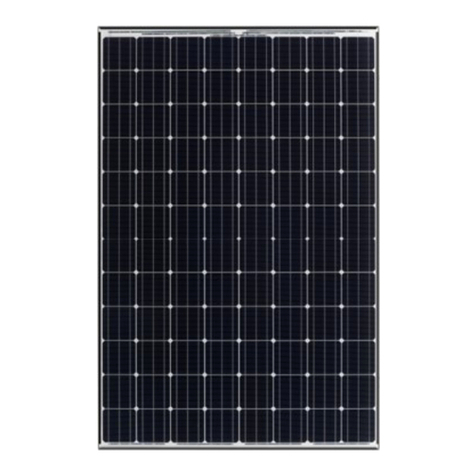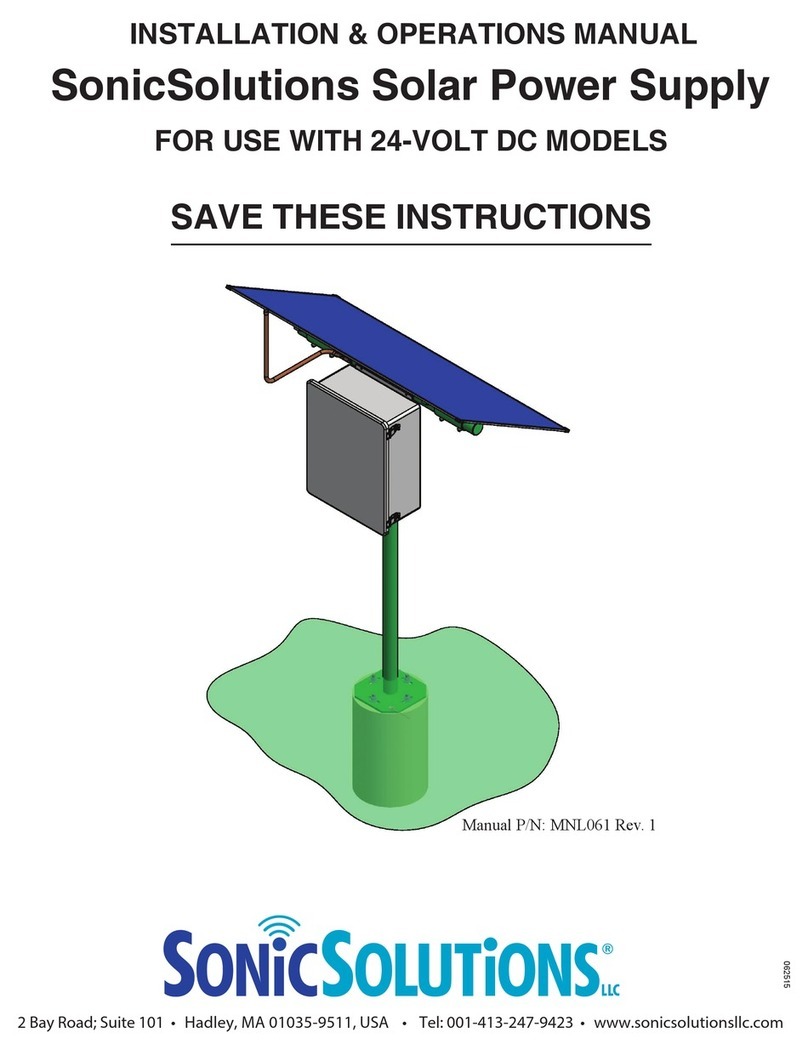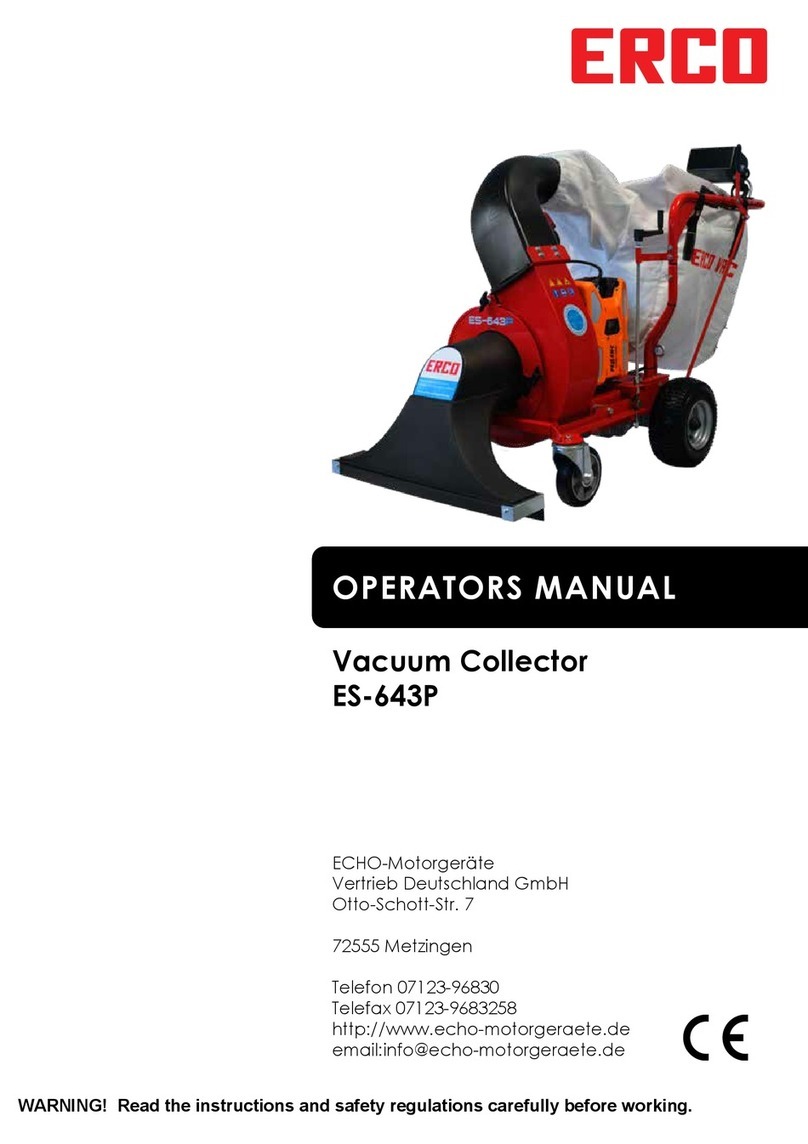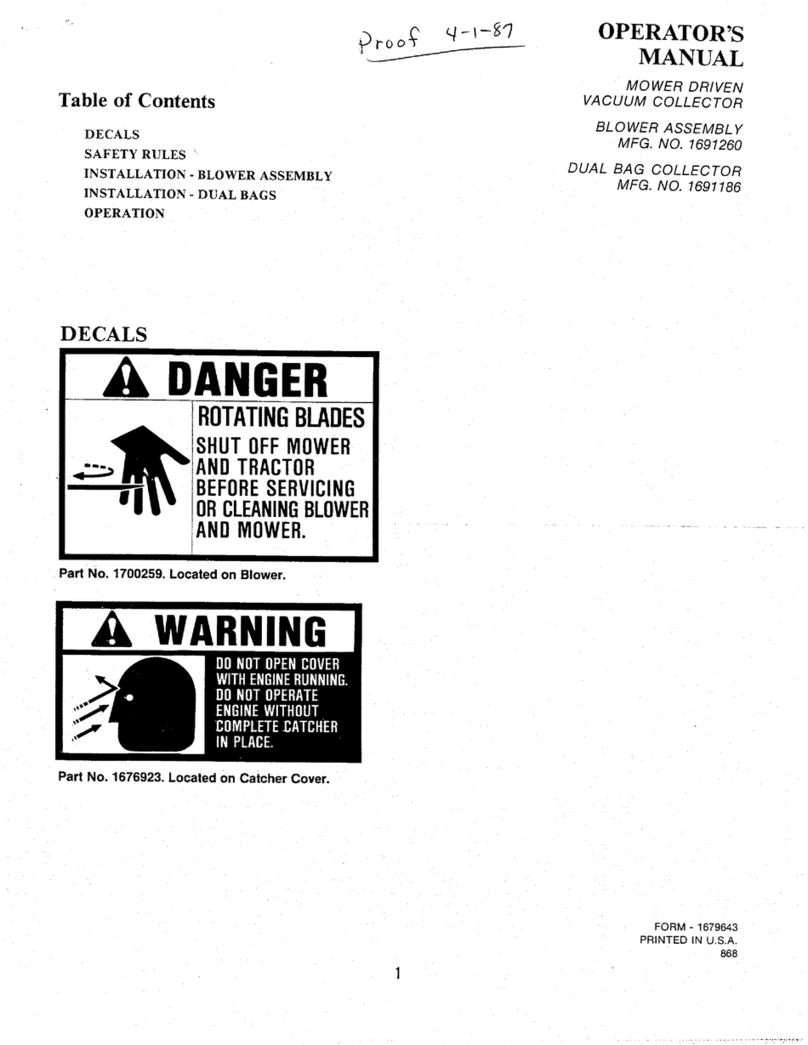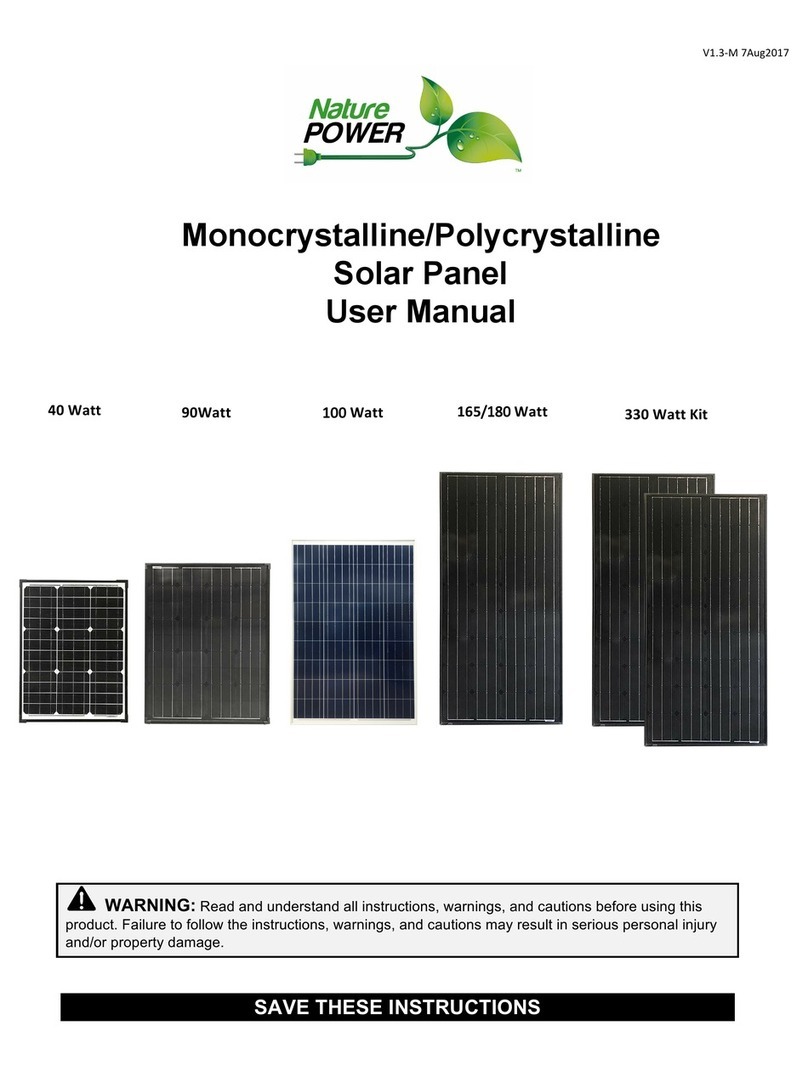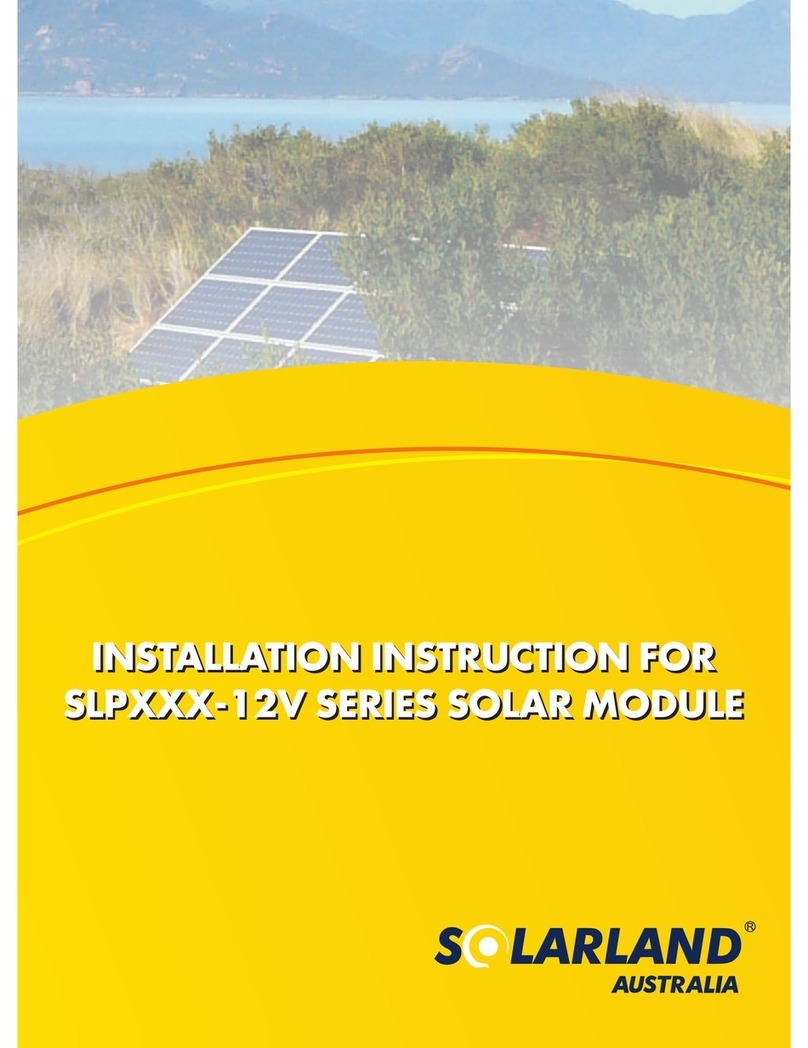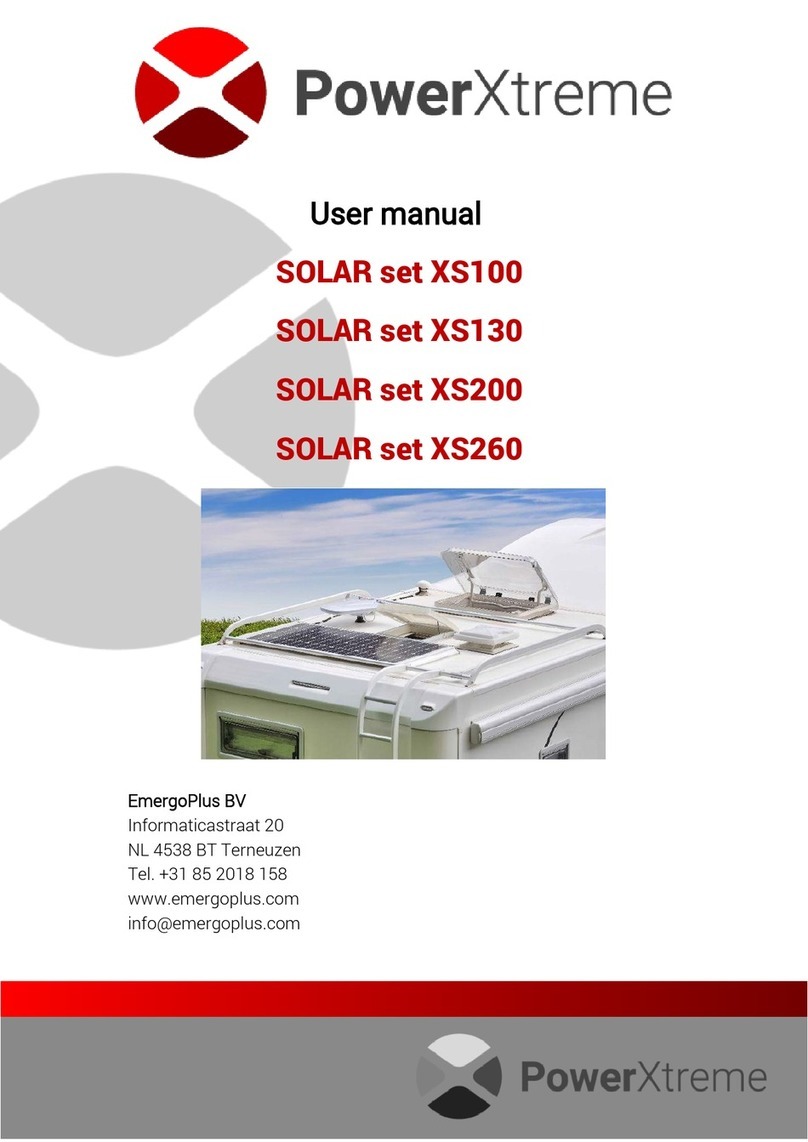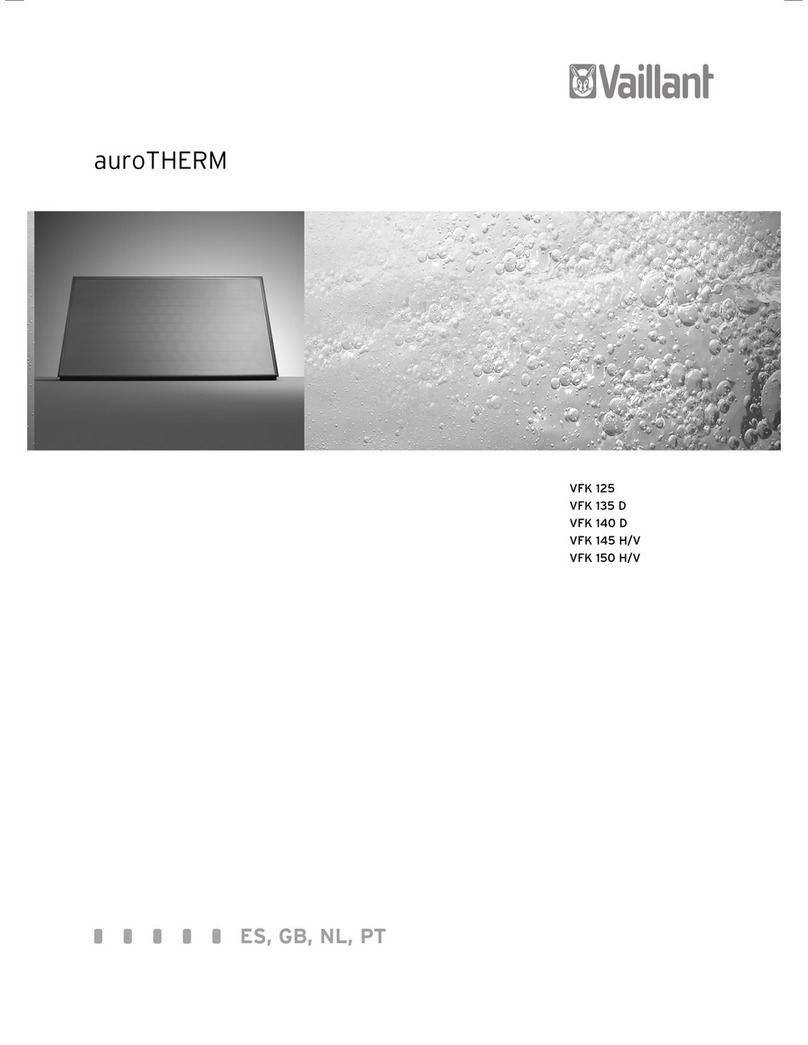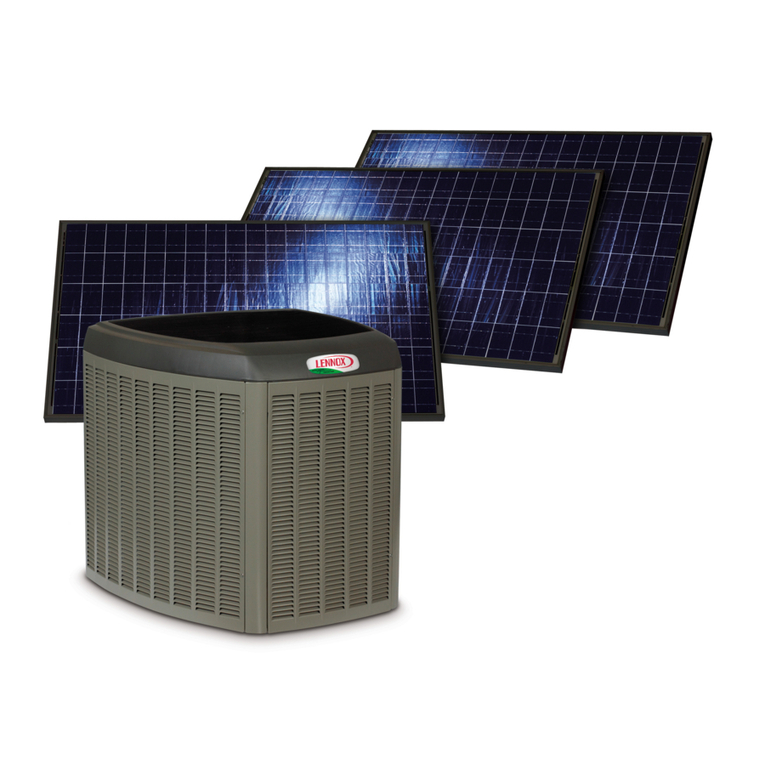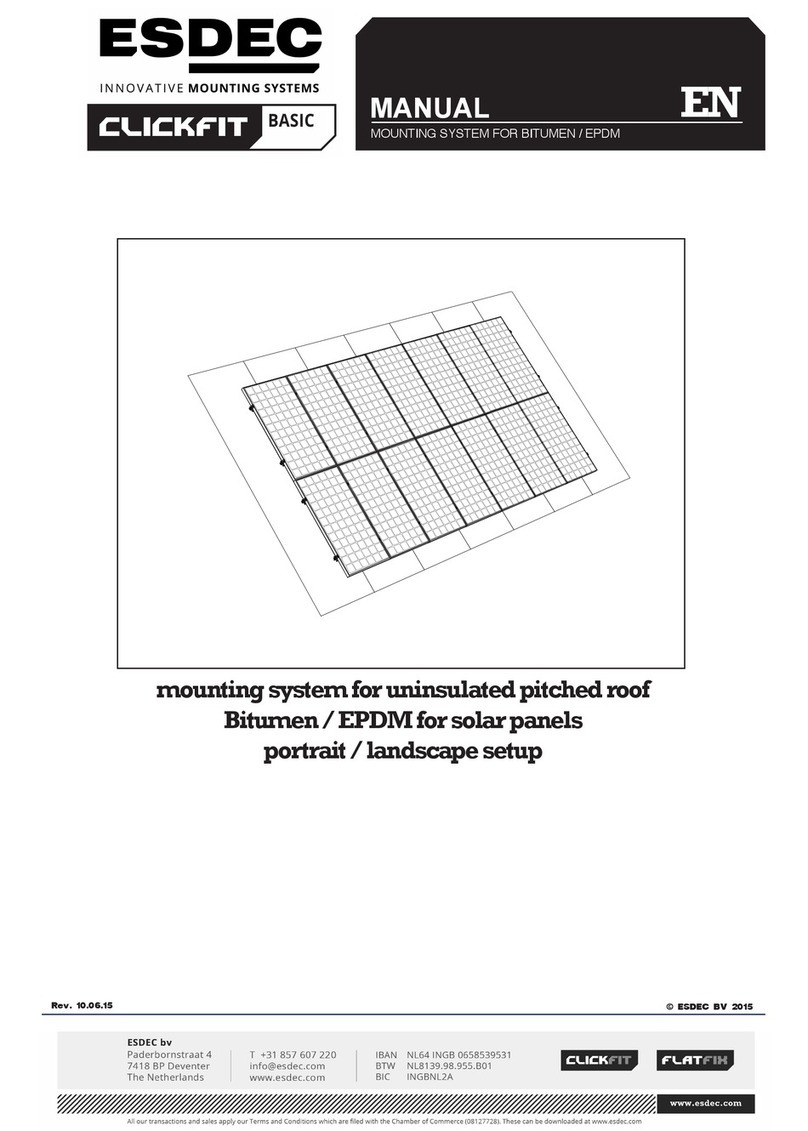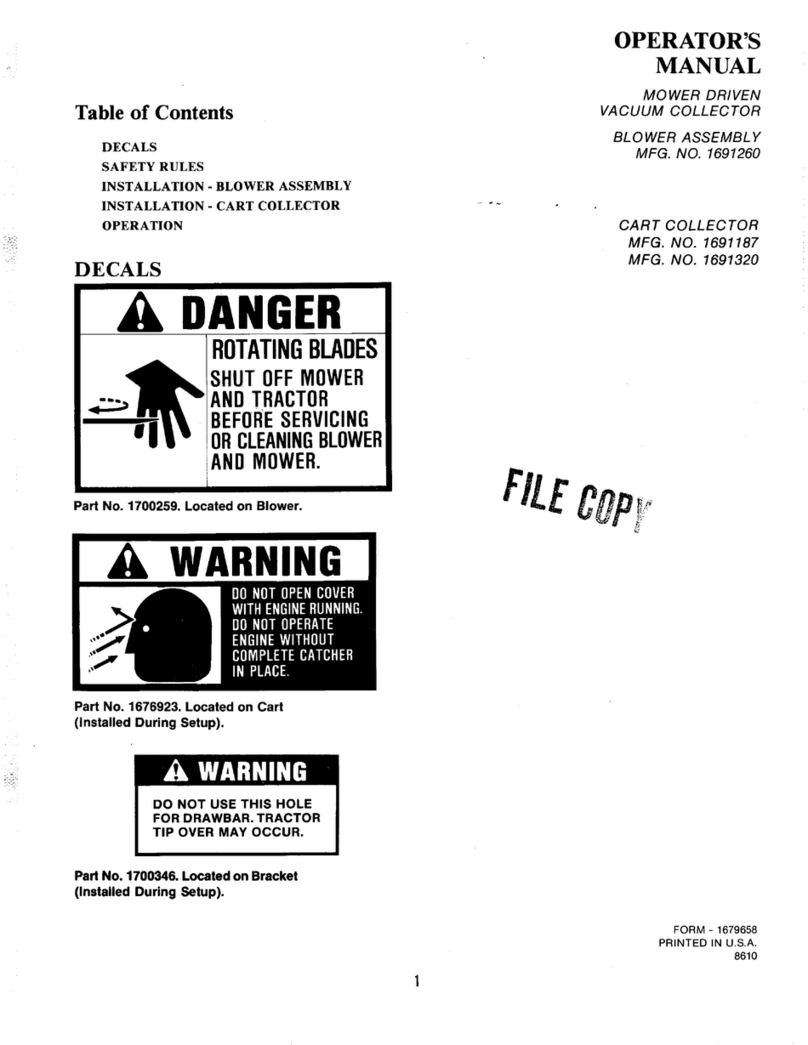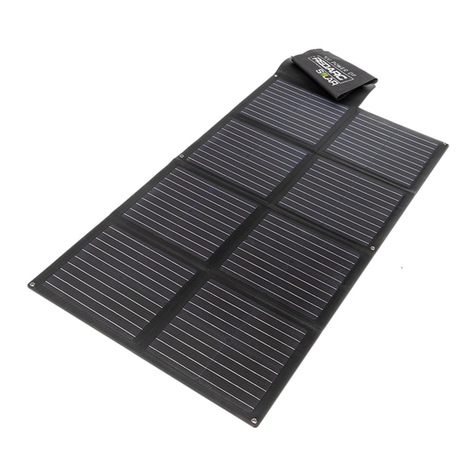
sunlight and therefore boost current and
power. In addition, colder temperatures can
substantially increase voltage and power.
Solartec modules are constructed with
tempered glass, but still must be handled with
care. If the front glass is broken or if the
polymer backskin is torn, contact with any
module surface or the frame can produce
electrical shock, particularly when the module
is wet. Broken or damaged modules must be
disposed of properly.
Refer to Section 690-8 of the National
Electric Code for an additional multiplying
factor of 1.25 which may be applicable.
The modules have been evaluated by UL
for a maximum positive or negative design
loading of 30 lbs/ft2.
Installation Condition
Installation shall be in accordance with
CSA C22.1, Safety Standard for Electrical
Installations, Canadian Electrical Code, Part 1.
Sit Selection
PV modules should be installed in a location
where there is no shading throughout the year.
In the northern hemisphere, PV modules
should typically face south, and in the
southern hemisphere, PV modules should
typically face north. Please make sure that
there are no obstructions in the surroundings
of the site of installation. Artificially
concentrated sunlight shall not be directed on
the module. Take proper steps in order to
maintain reliability and safety in case the PV
modules are installed in areas that have heavy
snow / extreme cold / strong winds /
installations over, or near, water and areas
where installations are prone to salt water
exposure or on small islands or in desert
areas..
Operating Conditions
A. Modules are intended for use in
terrestrial applications only—no outer
space use.
B. Modules must not be installed nor
operated in areas where, salt, hail,
snow, sand, dust, air pollution,
chemically active vapors, acid rain, soot,
etc., are excessive.
C. The recommended standoff height is 20
cm. If other mounting means are
employed this may affect the UL Listing.
D. The ambient temperature should be
within –20°C (-4°F) to 46°C (115°F). The
temperature limits are defined as the
monthly average high and low of the
installation site.
E. The wind pressure load of the
installation site should be less than
2,880N/m2 (60PSF).
Mechanical Installation
Modules may be mounted at any angle from
a vertical orientation to a horizontal one. The
appropriate fixed tilt angle and azimuth
orientation should be used in order to
maximize the exposure to sunlight. They may
be mounted in either orientation, in
“landscape” or “portrait.”
There are several approved ways to mount
these Solartec Modules to a support structure.
They may be mounted either using the bolt
holes provided or using frame clamps (not
provided). For roof mounting applications the
assembly is to be mounted over a fire resistant
roof covering rated for the application
Mounting Using Frame Bolt Holes
The modules may be fastener to a support
using the bolt holes in the bottom of the frame,




